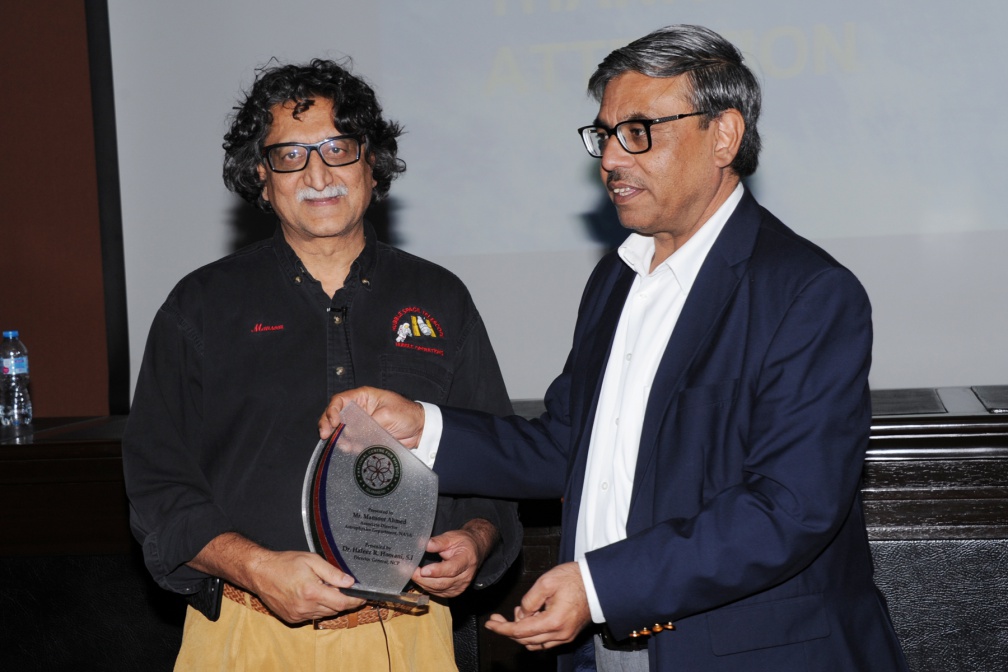Following the theme of our Astrobiology edition, we asked some renowned personalities of Pakistan to share their views on man’s search for life. In this part, we have Mr. Mansoor Ahmad, who is an astrophysicist at NASA, answer our questions.
Questions
- 1. How do you view astrobiology? What will be your definition of it?
- 2. How many chances are there for the existence of ExtraTerrestrial life and has it made any contact with us yet?
- 3. What do you think about the “WOW Signal” and other theories about regarding aliens?
- 4. What can life look like on other planets? Can it be like what we see in popular culture or not?
- 5. Should we able to unravel the mysteries about our origin on this planet after learning about ExtraTerrestrial life? How can it be so?
Part One: Namira Salim on Astrobiology
Mansoor Ahmad
Mansoor Ahmed is a Pakistani astrophysicist, who has been associated with NASA for almost 35 years and is currently serving as the associate director of the Astrophysics Projects Division, as well as the program manager for the Physics of the Cosmos program and the Cosmic Origins program at NASA Goddard Space Flight Center, Maryland. Here is what he had to say.
1.Astrobiology is the science of understanding the creation of organic molecules from the primordial elements/conditions that existed on earth before life began. It is also the search for such organics in exoplanets.
2. The famous Drake’s equation predicts that there should be millions of intelligent life forms just within our own galaxy, even with the most conservative assumptions of probability for the parameters necessary to evolve intelligent life. These parameters include:
- The rate of formation of stars suitable for the development of intelligent life.
- The fraction of those stars with planetary systems.
- The number of planets, per solar system, with an environment suitable for life.
- The fraction of suitable planets on which life actually appears.
- The fraction of life-bearing planets on which intelligent life emerges.
- The fraction of civilizations that develop a technology that releases detectable signs of their existence into space.
- The length of time such civilizations release detectable signals into space.
- Even if we assume 0.01-0.02 % probability of each of the parameters above, with the sheer numbers of stars in our galaxy, the Drake equation predicts millions of intelligent civilizations.
- Unfortunately, we have been unable to detect any of them so far with our limited technological capabilities. And there has been no contact made by them, as far as I know. The fact that they haven’t made any contact with us either, says a lot about the restrictions imposed by the laws of nature, such as huge distance between us and any other possible civilization as well as the limit of traveling speed to the speed of light. It will take thousands of years for someone to visit us. They either have to be able to live for thousands of years or have discovered how to travel faster than light.
3. I’m not too familiar with the “WOW” signal so I cannot comment.
4. Just by looking at so many life forms existing on earth, under extremely hostile environments, it is easy to assume that life forms completely different than what we can imagine might exist elsewhere. Detecting this different lifeform is however another matter. Unless such lifeform physically visits us and introduces themselves to us, we can only detect them remotely. If we are to detect an extraterrestrial lifeform with remote sensing, then we can only look for the signature of life as we understand it. Let’s say there is a lifeform that is entirely Hydrogen based. We will have no idea what their biological signature will look like and what gaseous emission will be present in their atmosphere. Therefore, we can only search for life as we understand it to exist on earth because those signatures we can detect through remote sensing.
5. I believe that will be the case. So far, we have only one example of the evolution of life. The earth. Having more data points will by definition increase our knowledge base and increase the probability of solving the mystery of the origin of life. NASA is planning a mission to visit Titan, one of Saturn’s moons that has a high probability of the processes that convert chemistry into biology. The mission is named “Dragonfly”, consisting of a drone capable of flying around Titan’s surface, landing at different locations and study the organic material underneath the surface. We hope this mission will help our understanding of how life could have evolved on earth.
For the lovers of Astronomy: https://scientiamag.org/mansoor-ahmad-a-peek-into-the-life-and-work-of-pakistani-astrophysicists-working-at-nasa/



